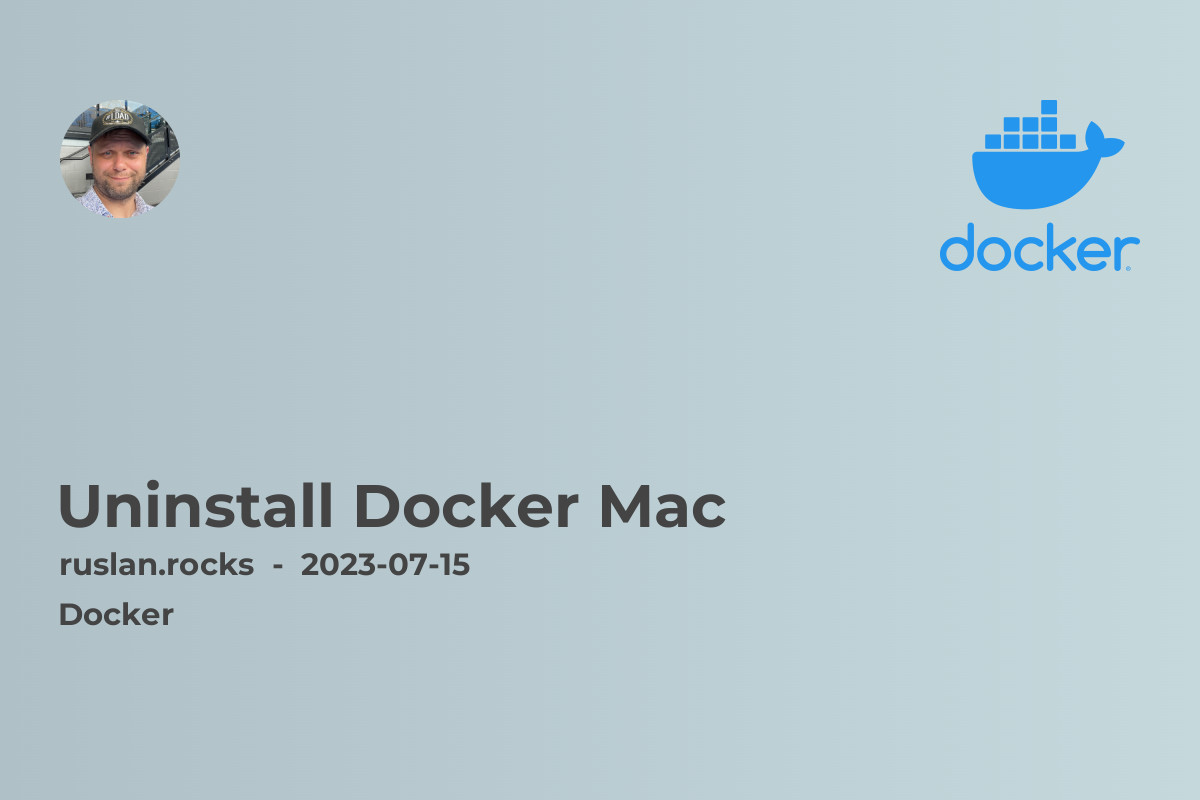- Why Uninstall Docker?
- Step 1: Stop Docker Containers and Services
- Step 2: Uninstall Docker Desktop
- Step 3: Remove Docker Images and Containers
- Step 4: Remove Docker Configuration Files
- Step 5: Remove Docker-related Environment Variables
- Step 6: Restart Your Mac
- Related Articles

If you've been using Docker on your Mac and have decided to move on to other containerization tools, or if you're experiencing issues with Docker and want to start fresh, you may be wondering how to uninstall Docker from your Mac. In this article, we'll guide you through the process of uninstalling Docker, step-by-step. Whether you're a beginner or an experienced user, this guide will help you remove Docker from your Mac effectively.
Why Uninstall Docker?
Uninstalling Docker from your Mac may be necessary for a variety of reasons. Perhaps you're no longer using Docker and want to free up disk space. It's also possible that you're encountering issues with Docker and want to start with a clean slate by uninstalling and reinstalling the software. Whatever your reasons may be, it's important to follow the proper steps to ensure a complete and clean removal of Docker from your Mac.
Step 1: Stop Docker Containers and Services
Before uninstalling Docker, it is important to stop all running containers and services to prevent any data loss or unexpected behavior. To do this, open the Terminal app on your Mac and execute the following command:
docker-compose down
This command will stop all running containers and remove their associated network, volumes, and services.
Step 2: Uninstall Docker Desktop
To uninstall Docker Desktop, follow these steps:
- Close the Docker Desktop application (if it is running).
- Open the Applications folder on your Mac.
- Locate the Docker application and drag it to the Trash.
Step 3: Remove Docker Images and Containers
To remove Docker images and containers that may still be present on your Mac after uninstalling Docker Desktop, follow these steps:
- Open the Terminal app on your Mac.
- Execute the following commands, one at a time, to remove Docker images and containers:
docker image prune -a
docker container prune
These commands will remove any remaining Docker images and containers on your Mac.
Step 4: Remove Docker Configuration Files
To remove Docker configuration files from your Mac, follow these steps:
- Open the Terminal app on your Mac.
- Execute the following command to remove the Docker configuration directory:
sudo rm -rf ~/.docker
This command will delete the ".docker" directory, which contains Docker's configuration files.
Step 5: Remove Docker-related Environment Variables
To remove Docker-related environment variables from your Mac, follow these steps:
- Open the Terminal app on your Mac.
- Execute the following command to open your bash profile:
nano ~/.bash_profile
- Look for any lines that contain Docker-related environment variables (e.g., "export DOCKER_HOME=/Users/your-username/.docker") and delete them.
- Press
Ctrl + Oto save the changes, then pressCtrl + Xto exit nano.
Step 6: Restart Your Mac
After completing the uninstallation process, it is recommended to restart your Mac to ensure that any remaining Docker processes are terminated.
Related Articles
Here are some articles that you may find useful for further exploration of Docker-related topics:
- What Is Docker: Learn more about Docker and its benefits for containerization.
- Docker vs. Kubernetes: Which Container Orchestration Tool Should You Choose?: Explore the differences between Docker and Kubernetes, two popular container orchestration platforms.
- Managing Microservices with Docker Swarm and Kubernetes: Discover how Docker Swarm and Kubernetes can be used to manage microservices.
- What Is Docker Image: Get insights into Docker images and learn how they are used in containerization.
- How to Scale Docker Containers: Learn techniques for scaling Docker containers to handle increased workloads.
By referring to these articles, you can expand your knowledge of Docker and related concepts while exploring various aspects of containerization and container orchestration.
In conclusion, uninstalling Docker from your Mac involves several steps, including stopping Docker containers and services, uninstalling Docker Desktop, removing Docker images and containers, deleting Docker configuration files, and removing Docker-related environment variables. Following these steps will ensure a clean removal of Docker from your Mac. Additionally, by exploring the related articles, you can dive deeper into Docker and related containerization topics.

